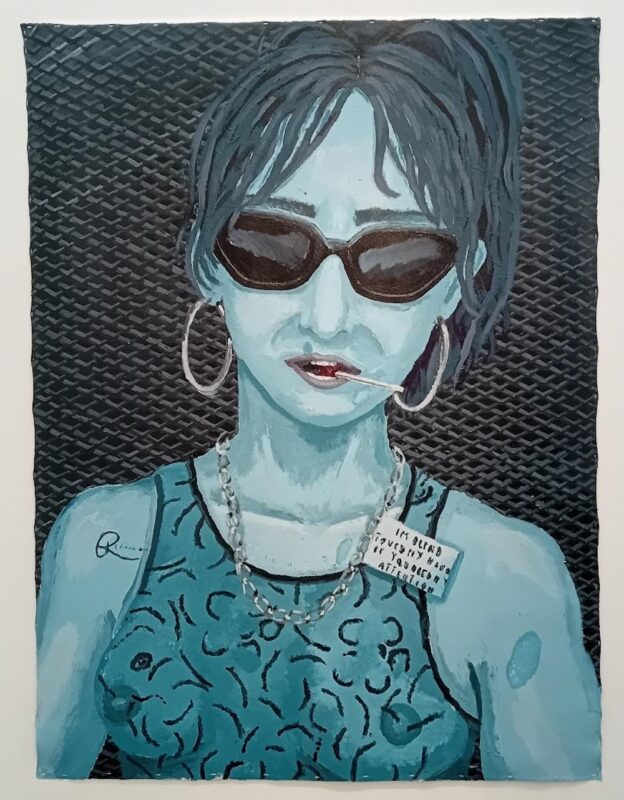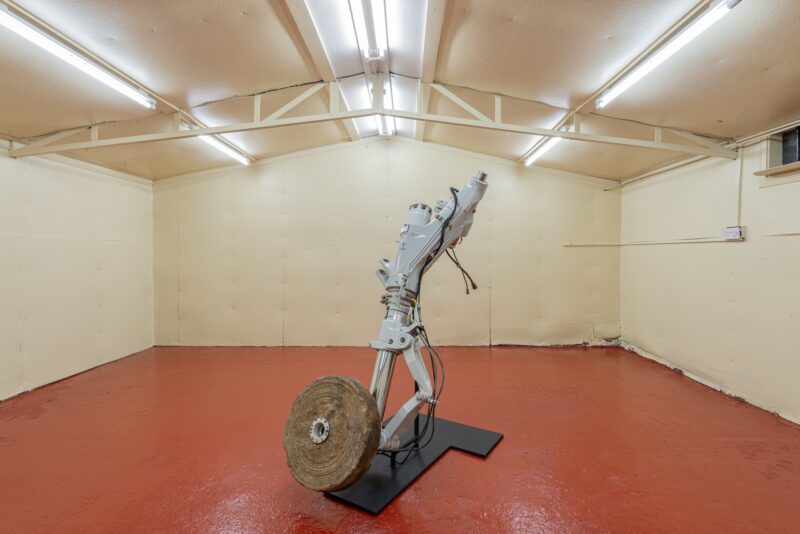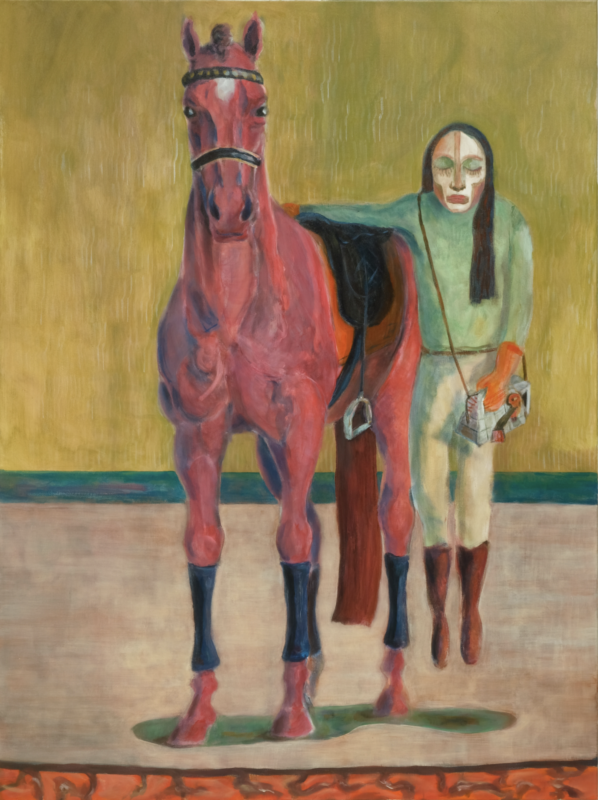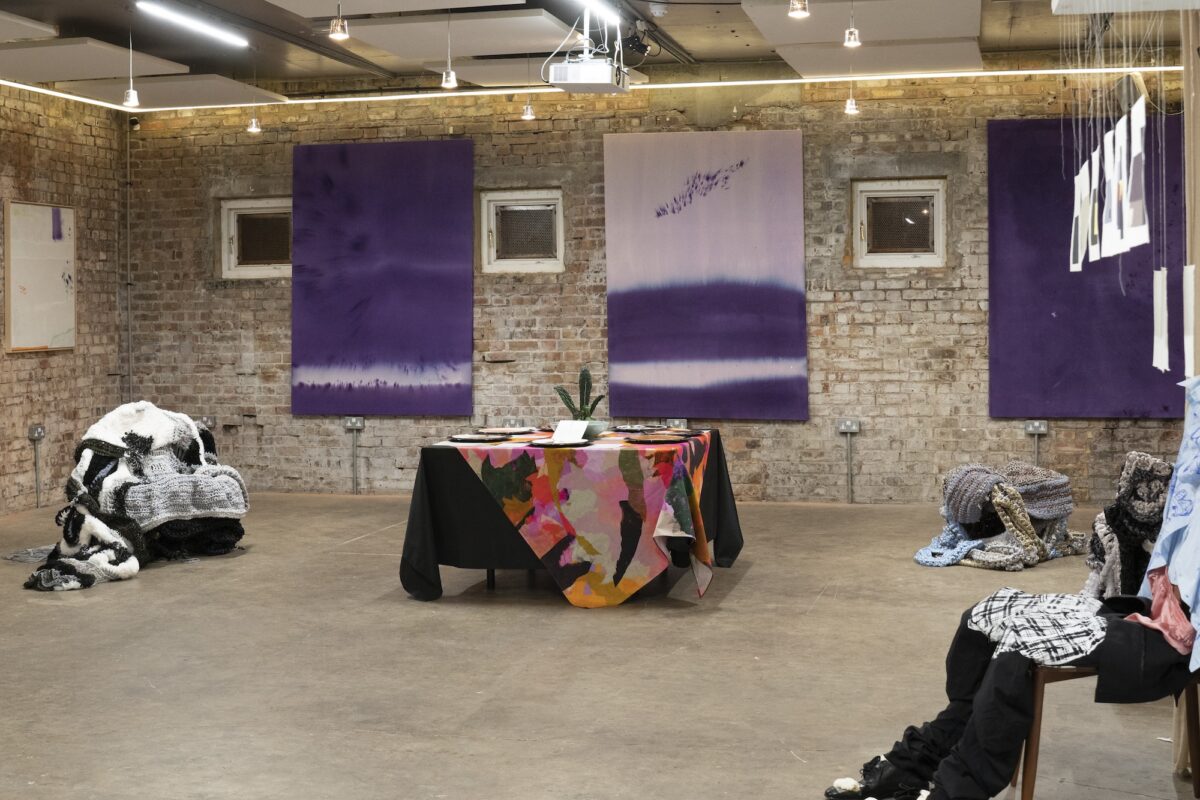
In the postmodern society, the lack of a clear definition of ‘connection’ makes it difficult for individuals to anchor themselves in others, leading to a sense of distance between people. This distance causes the part of our lives that relies on others to fade away. When individuals become isolated, true ‘encounters’ become more precious, which have the power to rescue individuals trapped within themselves by ‘mirroring’ and seeking the traces of others’ influence on oneself. This process evokes a sensitive experience between lives and calls for a return to spirituality.
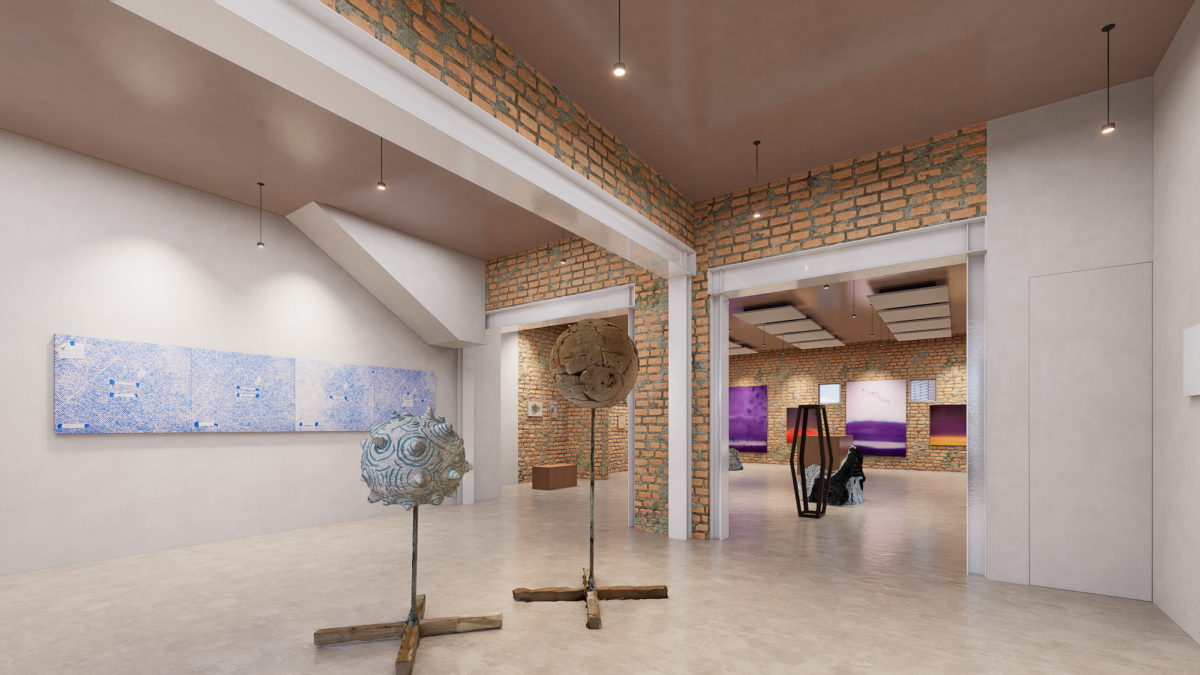
The exhibition I and Thou explores the influence of others on the self during the solitary journey of life through various artistic forms such as sculpture, performance art, painting, photography, and fashion. Although life exists in the same time and space, continuous alienation often makes it difficult for us to empathize with the desires of others.
However, if we trace back to the moment just after the universe’s first explosion, when particles floating in space attracted and combined with each other, we realize that, in fact, we were already sharing each
other then.
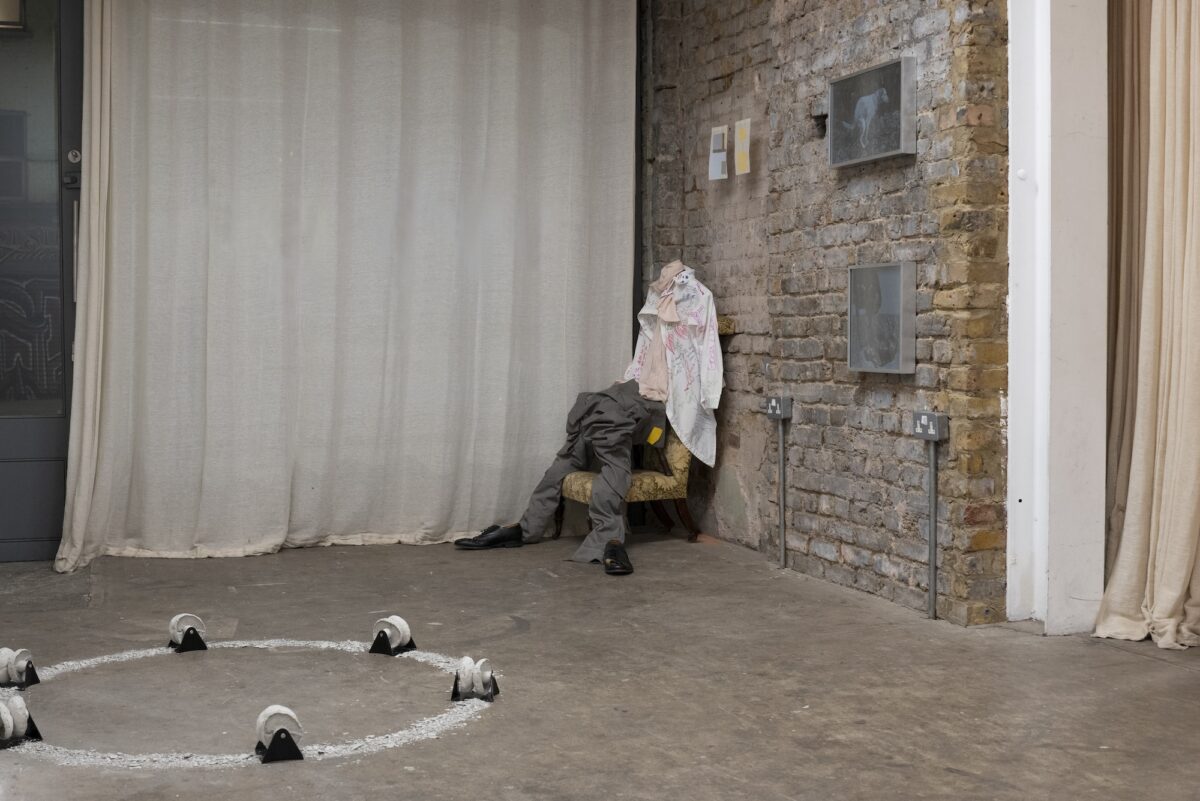
Featuring 14 artists, each expressing the I and Thou theme in their own unique way, the exhibition encourages viewers to reflect on the relationships between the self, others and the broader world. We invite you to explore I and Thou with us, where we delve into the connections that shape our solidarity journeys.
Exhibiting artists: Anyi Ji, Cecily Lasnet, Geyujing Shen, Jonah Hoffman, Junchen Zhou, Lexi(jiayu) Duan, MISO, Noelle Turner, Patrick Dougherty, Saki, Tom Lyons, Vincent Matuschka, Xin Huang, Yucen(Echo) Liu.
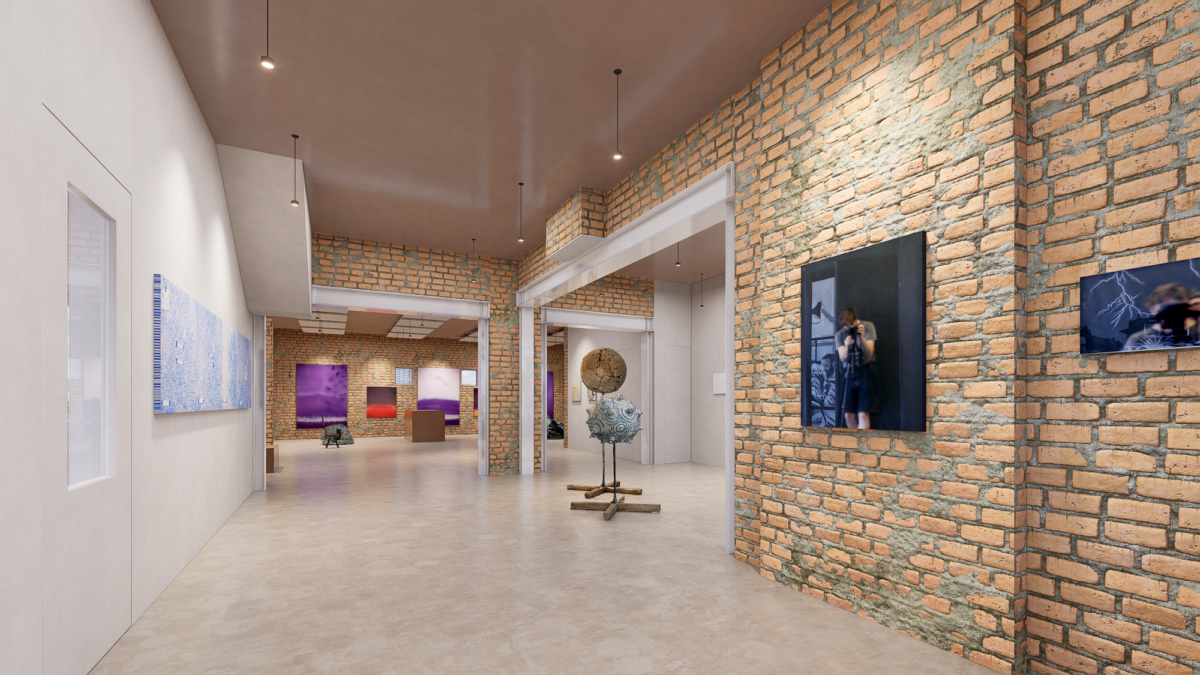
I and Thou, October 4th -7th, 2024, 133 Bethnal Green, E2 7DG @and_thou_
About the artists
Jonah Hoffman (b. 1998, New Mexico, USA) earned his BFA from the School of the Art Institute of Chicago and is currently an MFA candidate at Goldsmiths, University of London, expected to graduate in 2025. He has received grants from the Elizabeth Greenshields Foundation. Jonah’s work explores the complex relationships between art, materials, and power. By examining the history of cobalt blue pigment and its connections to modern mining practices, Jonah reveals the intricate links between art, exploitation, and the global economy. He calls for deeper theoretical reflection on the use of materials, considering the social, economic, and ecological impacts behind them. Through the use of cobalt blue, Jonah connects different elements of global art, prompting deeper thought on both art and material usage. While artistic creation is often seen as a personal and intimate process, it opens up a broader perspective once the work is revealed. Though the artist’s personal experience is significant, the real reason a work resonates with people is often due to the emotional and intellectual connections it forms with the audience
Vincent Matuschka’s works carry his distinctive sense of humour, creating moments of surprise for the viewer. By placing a reflective mirror in front of his paintings, the viewer’s own image is reflected back while they attempt to engage with the artwork. At this moment, the viewer faces two choices: to eagerly uncover the details of the painting or to pause and observe their own reflection. This design provokes curiosity, adding a subtle sense of voyeurism. At the same time, Vincent’s work intensifies the dialogue between the viewer and the artwork, drawing them into an ongoing exploration of the painting’s full scene. In doing so, the viewer seamlessly becomes a part of the artwork itself.
Xin Huang is an artist based in London. Her work explores the relationship between industrial production and natural growth through a unique combination of sculpture, found objects, and organic forms cast in concrete. She views incompleteness as sites of aesthetic and speculative inquiry. After the rain, fungi grow wildly in the hidden corners of nature, embodying both resilience and fragility. In Xin’s work, these fungi are cast in cement, preserving every texture and detail, yet stripped of the softness and vulnerability of life. This frozen form captures the fleetingness and futility of life, while suggesting a different kind of existence after death. This contemplation of fungi’s life and death subtly echoes the theme of the “I and Thou” exhibition—it invites us to reflect on our relationship with the world: is it one of dialogue or possession, interdependence or separation? In this conversation between humans and the world, fungi serve as a unique medium, guiding us toward a deeper reflection on life, death, and existence.
Tom Lyons work is informed by an interest in religious and folk art and the expression of personal histories through abstracted forms. Lyons currently lives and works in London, having this year graduated from Central Saint Martin’s college of Art and Design. Lyons’ past experience involves working under both well-established Tate artist Nicholas Pope and emerging Artsy Vanguard artist Harminder Judge, where he assisted in the development of large-scale sculpture We often gaze up at the sun and moon, trying to capture their distant brilliance or gentle glow. However, in Lyons’ work, the sun and moon engage in an intimate dialogue with the artist. The textures carved into the diseased ash tree reveal Lyons’ focused and enclosed self during the act of creation, each mark a testament to his deep concentration. The sun bears the scars of this process, blurring the lines of who influenced whom—whether Lyons imprinted himself onto the sun or the sun left its mark on him. Meanwhile, the softer side of human nature is revealed in the moon, with its delicate blue lines coiling around, evoking a sense of childlike playfulness and freedom, expressing a different emotional realm
Yucen (Echo) Liu is a sculptor and multidisciplinary spatial designer based in Shanghai and London. In her three years of studies at RMIT in Melbourne and one year of RCA, Yucen aims to weave themes like home, wanderers, and belonging in society into her work. The dichotomy between dwelling and displacement, along with the longing for connection and identity in a fragmented world, are central elements in her vision. The work The Unsealed explores the transient and fluid nature of home as a
concept. By using discarded door locks and wall fragments, Yucen invites viewers to reflect on home not just as a physical place, but as an emotional and spiritual space of belonging. Meanwhile, Chair 01 symbolizes the passage of time and impermanence through the changing patterns of rust, highlighting our deeper connection to everyday objects. Through the decay, transformation, and reconstruction of these objects, Yucen’s works inspire viewers to reflect on their relationship with the world in the face of change and fragmentation. This dialogue extends beyond the material realm, touching on emotions and identity—each piece suggesting a symbiotic relationship between people, objects, spaces, and the self.
Geyujing Shen was born in 1999 in Jiaxing, Zhejiang Province, China, she is currently doing a fully-funded PhD under the Sociology department at the University of Westminster, she graduated with an MA in Photography and UrbanCultures at Goldsmiths College, University of London. Jing has received a grant from the Female Documentary Photography Foundation. Jing’s work is known for its ability to capture the most delicate emotions. In this exhibition, her piece Dental Caries transforms a simple dental issue into a profound reflection on caregiving. Meanwhile, You Are the Only Butterfly Who Came for Me explores themes of memory and death. Jing excels at finding poignant moments in the smallest details, illustrating how our lives are composed of countless fleeting yet meaningful fragments. Her art doesn’t rely on grand or monumental narratives; instead, it resonates through the pain of a toothache, the ripple of a flower petal, and the fleeting presence of a butterfly. These small moments, though ephemeral, leave a lasting impression on our memories. While we may not encounter the same butterfly, we all remember the moment when we saw its wings fluttering by.
Junchen Zhou (b. 1997) is a multimedia artist from China, currently based in London, UK. She earned her BFA in Fashion at Fashion Institute of Technology and MFA in Computational Art at Goldsmiths University. Her work explores the intersection of language, technology, and narrative structures, focusing on the collapse of communication in various forms of conversation and storytelling. Junchen’s work consistently revolves around a subtle sense of awkwardness, exploring the delicate emotions that arise in human interactions. In social situations, we often experience those indescribable moments—brief silences, sudden distractions, uneasy movements. While language helps us express feelings, it also limits our ability to convey the most subtle emotions. In Junchen’s performances, the metaphor of “searching” is used to explore these emotional states. A recurring symbol is the elephant—when we are searching, we often lose our way. Are we looking for the elephant, or are we really searching for ourselves?
Perhaps, in the end, we are the elephant. Through this symbolic narrative, Junchen’s work delves into the relationships between self and others, examining identity and inner emotions in the process of searching and getting lost. This complex emotional tension reflects not only on the human experience but also on the boundaries of language and physical expression in performance art.
Saki (b. 2000) is a multi-disciplinary artist from Shanghai, currently based in London, UK. She is progressing her masters at Goldsmiths MFA. She explores themes of memory, violence and sexuality. Throughout different historical periods and civilizations, the adornment of hair has taken on diverse forms. Yet, regardless of cultural context, hair has consistently held a unique significance. As part of the body, hair not only serves as a symbol of identity and aesthetics but also becomes a medium through which individuals connect with others. Braiding, in its essence, carries an unconscious maternal instinct, symbolizing care and nurturing. The one who braids is often seen as a giver, radiating warmth and a sense of safety. However, the act of braiding also hints at a latent power—when one holds another’s long hair, the ability to nurture is coupled with the potential to harm. In Saki’s performance art, the entanglement of emotions and relationships is powerfully conveyed. Through the interplay of bodies and the act of braiding, she deftly captures the complexity of human connections, blending affection, teasing, pain, and submission. Saki’s work explores the delicate tension in intimate relationships, revealing dynamics that are at once tender and charged with power
Noëlle Turner (b.1993) is a British artist based in London. She earned her BA in Fine Art from The Ruskin School of Art, University of Oxford, 2015, and her MFA in Fine Art at Goldsmiths University, 2024. Noëlle’s paintings exude a powerful yet gentle energy, effortlessly invoking a sense of calm and meditation. In her work, colour seems to possess a life of its own, flowing, merging, and influencing one another. By combining pigments with chemicals and water, she allows the colours to break apart, crystallize, or erode on the canvas. These processes mirror the relationships and dialogues in our own lives— encounters, fusions, and the formation of the self. Ultimately, her paintings become living compositions of transformation and coexistence, symbolizing the intricate and beautiful connections between nature, individuals, and others.
Anyi Ji earned her BA in Fine Art and Sculpture from Camberwell College of Arts, University of the Arts London, and is set to continue her artistic journey by pursuing an MA in Ceramic & Glass at the Royal College of Art. Anyi Ji’s work draws from the quiet power of nature and the spiritual depth of Buddhist philosophy, exploring the impermanence of life through the delicate forms of ceramics. Her creations, inspired by the fleeting beauty of mountain silhouettes and the cyclical blossoming and withering of flowers, evoke a profound meditation on life, death, and transformation. In I and Thou, her work resonates with the theme of interconnectedness, reflecting a deep dialogue between the self and the other, where creation becomes both a physical act and a spiritual journey, echoing the eternal balance between life’s transience and the longing for immortality.
MISO is a classical cellist transitioning into a transdisciplinary practice. After years of performing with top UK ensembles like the Orchestra of the Royal Opera House, she began exploring new artistic directions through a DYCP Arts Council grant and her MFA studies at Goldsmiths. In Miso‘s work, despite their AI-driven origins, she focuses on human connection and interaction. In Cadeau X, a series of surreal photographs, Miso captures the intimate moments of shared meals at home. Each gathering is linked by the gift of ingredients from one guest, which are passed on to the next through the dishes served. By using food as a medium, Miso weaves a tapestry of connections between people—there are delicious meals, joyful conversations, and the warmth of soft lighting. Here, technology serves to prolong these fleeting, beautiful moments, preserving them in memory and extending their emotional resonance.
Lexi Jiayu Duan is a fashion designer who began her journey at the Fashion Institute of Technology (FIT) in New York, where she earned an AAS degree in Fashion Design. She then pursued her BA in Knitwear at Central Saint Martins. Lexi’s final collection is inspired by her feelings towards her grandmother, who uses a wheelchair. The collection features a reimagining of chairs using an extensive array of yarn and ribbons, blending soft textures with wearable designs. This work represents a long-term dialogue: as a child, Lexi’s grandmother would knit clothes for her family while seated in a chair, and now, as an adult, Lexi seeks to create a comfortable seat for her grandmother. This collection reflects how memories from childhood, particularly of loved ones who have grown distant, continue to shape our future. The people who have been part of our lives leave an enduring imprint, becoming a part of who we are as we move forward.
Patrick Dougherty is a designer from Dublin, Ireland who recently graduated from BA Fashion at Central Saint Martins. His final collection, Peekaboo, is a study of the awkward growing pains of adolescence. Inspired by key pieces from his own teenage wardrobe—such as his school uniform, favourite denim jacket, and formal church attire. Patrick’s fashion designs are like a romantic dialogue, bridging the connection between him and his adolescent self. In his designs, we see the raw rebellion, naïve slogans, and emerging sensuality of adolescence—elements that not only evoke memories of the past but also help us rediscover who we are in the present. Fashion, too, becomes a romantic conversation with oneself.
Cecily Lasnet having graduated from Goldsmiths with a Graduate Diploma in Fine art, and from Oxford with a BA in English Literature, Cecily Lasnet’s practice is developing as one of close reading, listening and looking where she records the spaces of her own lyrical subjectivity. Cecily is showing a publication displayed as a series of prints whose genesis is in writing. Each print, built of layers of colour and translucency maps out a passing room of emotion in colour. Cecily’s work possesses a slow yet compelling force that invites exploration. Each piece features unique colours and arrangements, yet they are intricately connected, provoking a sense of anticipation and curiosity about the next work. By incorporating text into her prints, Cecily not only avoids confining the viewer’s imagination but also seems to weave a continuous, hidden dreamscape with her elegant, dreamlike words.
